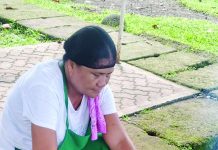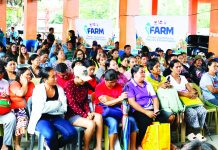
TACLOBAN CITY — The Bureau of Fisheries and Aquatic Resources (BFAR)in the region, in partnership with the city government of Ormoc, is set to launch the Ormoc Mariculture Park in December 2025 — a P12-million aquaculture initiative aimed at strengthening local fish production and providing sustainable livelihoods for fisherfolk in the city.
The project, to be implemented under the Aquaculture and Mariculture Expansion and Invigoration Project (AMEIP) and the BFAR Regular Fund – Cages for Livelihood Program, forms part of the government’s continuing efforts to modernize the fisheries sector and enhance food security in Eastern Visayas.
The mariculture park, located in Barangay San Juan, includes the installation of eight high-density polyethylene (HDPE) fish cages — four circular and four modular units — along with fingerlings, feeds for one cropping cycle, and harvest support materials.
It will directly benefit eight fisherfolk associations composed of more than 400 members. Beneficiaries will undergo technical and social preparation through financial literacy training, cooperative organizing, and hands-on aquaculture workshops to ensure the sustainability and profitability of their cage operations.
As part of its local counterpart, the Ormoc City government will provide 20 units of 5×5 bamboo cages for family-based aquaculture, extending the project’s reach to individual fisherfolk households.
During a planning meeting at the Ormoc City hall, BFAR 8 officer-in-charge Regional Director Dominador Maputol met with Rep. Richard Gomez, Mayor Lucy Torres-Gomez, Sangguniang Panlungsod Member Tomas Serafica, and other local officials to finalize the project’s implementation framework.
The meeting was also attended by representatives from BFAR’s Provincial Fisheries Office of Leyte, the Regional Fisheries Production and Support Services Division (FPSSD), and the Regional Fisheries Training and Fisherfolk Coordination Division (RFTFCD).
Director Maputol said the Ormoc Mariculture Park is envisioned not only to boost milkfish (bangus) production but also to promote polyculture systems, such as raising siganids (rabbitfish) alongside milkfish. He also proposed the future establishment of a city-managed feed mill to enhance Ormoc’s aquaculture value chain and reduce production costs.
The mariculture park is expected to begin operations by December 2025, with its first harvest projected by the second half of 2026. Once operational, it is estimated to contribute around 38 metric tons of additional milkfish production annually to the region, helping to stabilize local fish supply and improve income opportunities for fisherfolk.
The launch will coincide with the Ormoc Mariculture Forum, which will bring together service providers, aquaculture technology suppliers, cage fabricators, and fisherfolk groups. The event aims to foster collaboration, connect community beneficiaries with private partners, and promote innovation and sustainability in aquaculture.
Officials say the establishment of the mariculture park marks a significant step toward advancing sustainable aquaculture, increasing fish production, and creating inclusive livelihood opportunities for coastal communities in the 4th District of Leyte.
(ROEL T. AMAZONA)



